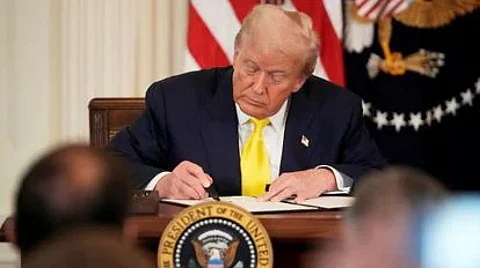
- NEWS
- the EDIT
- COMMENTARY
- BUSINESS
- LIFE
- SHOW
- ACTION
- GLOBAL GOALS
- SNAPS
- DYARYO TIRADA
- MORE

US President Donald Trump fired off a warning Friday of higher tariffs on steel and semiconductors in the coming weeks, which is expected to hurt the country’s primary export, which is computer chips.
“I’ll be setting tariffs next week and the week after, on steel and, I would say, chips. Chips and semiconductors, we’ll be setting sometime next week, the week after,” Trump said onboard Air Force One as he headed to Alaska for a summit with Russian President Vladimir Putin.
Department of Economy, Planning, and Development (DEPDev) Secretary Arsenio Balisacan said the effects will depend on the level of tariff that the US would impose.
“If they raise that to 100 percent, of course, we’ll be affected. But insofar as the effects on the economy, I don’t expect that to be adverse because, for one the value added of semiconductors and electronics is actually not as high compared to the value-added of other exports,” Balisacan indicated.
“In terms of its impact on the economy, it’s big in absolute amount. But in terms of the net amount that thing can bring to the Philippine economy, it is not that high.”
Spreading market is key
Balisacan also noted that the Philippines exports to other countries, not just the US. This is why he is also pushing for export as well as market diversification.
Trump said the levy rate would be “lower at the beginning” but “very high after a certain period of time,” as a way to encourage businesses to relocate operations to the United States.
The president said his policy would prompt companies in key industries like automobiles and artificial intelligence to relocate in order to “beat the tariffs,” which could be 200 or 300 percent.
Trump has also said he would employ this strategy with pharmaceuticals.
On 6 August, Trump announced a 100 percent tariff on semiconductors from firms that do not invest in the United States.
Trump has already instituted tariffs on steel, announcing an initial 25 percent levy that was later doubled to 50 percent.
